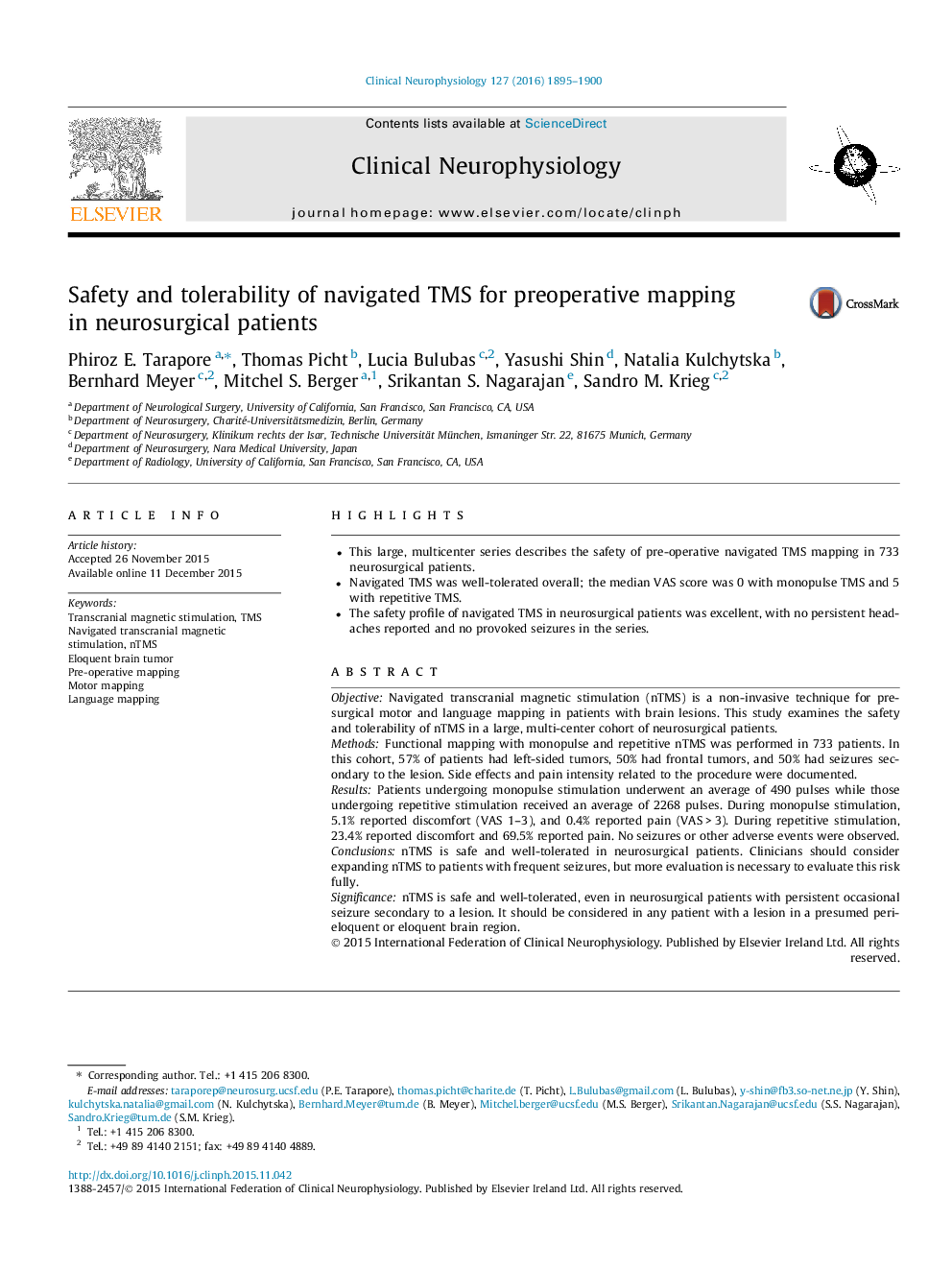| Article ID | Journal | Published Year | Pages | File Type |
|---|---|---|---|---|
| 3042904 | Clinical Neurophysiology | 2016 | 6 Pages |
•This large, multicenter series describes the safety of pre-operative navigated TMS mapping in 733 neurosurgical patients.•Navigated TMS was well-tolerated overall; the median VAS score was 0 with monopulse TMS and 5 with repetitive TMS.•The safety profile of navigated TMS in neurosurgical patients was excellent, with no persistent headaches reported and no provoked seizures in the series.
ObjectiveNavigated transcranial magnetic stimulation (nTMS) is a non-invasive technique for pre-surgical motor and language mapping in patients with brain lesions. This study examines the safety and tolerability of nTMS in a large, multi-center cohort of neurosurgical patients.MethodsFunctional mapping with monopulse and repetitive nTMS was performed in 733 patients. In this cohort, 57% of patients had left-sided tumors, 50% had frontal tumors, and 50% had seizures secondary to the lesion. Side effects and pain intensity related to the procedure were documented.ResultsPatients undergoing monopulse stimulation underwent an average of 490 pulses while those undergoing repetitive stimulation received an average of 2268 pulses. During monopulse stimulation, 5.1% reported discomfort (VAS 1–3), and 0.4% reported pain (VAS > 3). During repetitive stimulation, 23.4% reported discomfort and 69.5% reported pain. No seizures or other adverse events were observed.ConclusionsnTMS is safe and well-tolerated in neurosurgical patients. Clinicians should consider expanding nTMS to patients with frequent seizures, but more evaluation is necessary to evaluate this risk fully.SignificancenTMS is safe and well-tolerated, even in neurosurgical patients with persistent occasional seizure secondary to a lesion. It should be considered in any patient with a lesion in a presumed peri-eloquent or eloquent brain region.
